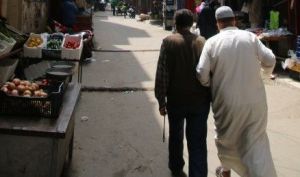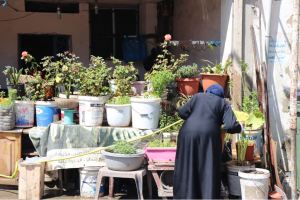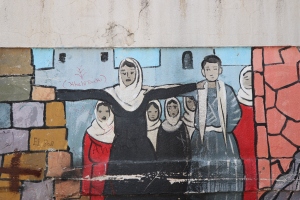Local faith communities are often the first responders to communities affected by conflict and displacement, providing food, shelter and other material needs in addition to providing spiritual and pastoral support (Kidwai and Fiddian-Qasmiyeh, 2017). In this blog post, Nobuyuki Asai describes how Soka Gakkai International, a community-based Buddhist organization, provided shelter and support to large numbers of internally displaced people after the 2011 earthquake and tsunami in Japan. At a time when many local government officials were either killed or displaced themselves, and local government buildings were destroyed, local government struggled to cope with the scale of the disaster. Asai describes how Soka Gakkai International was able to provide physical shelter, and practical, psychosocial and spiritual support to people affected by the earthquake and tsunami, themes we have been exploring in the Southern Responses to Displacement project here, here and here. Asai also describes how “Kitaku-nanmin,” Japanese for temporarily displaced people, is a serious concern in Japanese cities due to the ongoing threat of major earthquakes that could internally displace millions of people. In light of this, inter-faith collaboration between various religious organisations has begun in order to increase the levels of humanitarian action during times of disaster.
This blog was posted on 16th July 2019
If you find this piece of interest, please see our introductory mini blog on Faith-based Humanitarianism, and visit our recommended reading at the end of this post.
Soka Gakkai International – Faith-Based Humanitarian Action During Large Scale Disaster
by Nobuyuki Asai, Office of Peace and Global Issues, Soka Gakkai International
Soka Gakkai International (SGI) is a community-based Buddhist organization that promotes peace, culture and education centered on respect for the dignity of life. It has members across the world, but more than half of its centers are based in Japan and we have more than one thousand culture centers around Japan.
After the 2011 earthquake and tsunami, hundreds of thousands of people had to evacuate and were left homeless. The number of evacuees was much larger than expected and public buildings such as school gyms and general community centers were not sufficient to accommodate so many evacuees. As a result some rushed to other nearby buildings that appeared stable, including those of religious organizations. Forty-two existing Soka Gakkai (SG) centers accommodated 5,000 evacuees both at the time of the earthquake and tsunami, and in their aftermath, until temporary accommodation was built, as many homes were destroyed. Evacuees were in both urban and rural areas, but the number of evacuees was larger in urban areas. Most of the evacuees to SG centers were residents in the neighborhood of each center and included both SG members and non-members. For most of the non-members, it seems to have been their first time to visit the center.
After the earthquake and tsunami, local government could not function appropriately. Many local government officials passed away or were severely injured, and some of the government’s buildings were also destroyed. Consequently, SG shelters were run by local leaders who voluntarily gathered there. During the emergency period, local leaders were unable to distinguish between members and non-members, at least during the initial few days. Although, anecdotally, I heard that some non-members were initially hesitant to come to the centers, once there non-members didn’t feel uncomfortable and an atmosphere of cooperation was generated within a couple of days.
Tokyo is located about 600 kilometers away from the epicenter but we felt a huge tremor. The public transportation system was down all through the day and more than a million people were unable to return home and spent the night at the office, sake bar or a karaoke room. In this context, a couple of our centers in Tokyo also accommodated people on the night of the earth quake.
As I mentioned, shelters at SG cultural centers were mainly run by voluntary SG members. The SG headquarters and local branches in other areas delivered relief from outside to such centers, because the government was not able to cover private shelters at the initial stage.
Our centres had some advantages as compared to general shelters:
– The members regarded the management of centers as shelters as an extension of their day-to-day religious activities, because the leaders were already acquainted with one another and there had been many previous opportunities to manage religious activities in collaboration.
– Even when small problems or conflicts occurred among the evacuees, leaders of the organization could mediate between them relatively easily because the leaders knew many evacuees personally and were often trusted by them.
– Using the organization’s only register of community members, they were able to account for the evacuees at the centers and identify those who were not present, which helped them confirm people’s safety and whereabouts.
– Due to existing relationships of trust between leaders and evacuees, and the collaborative atmosphere at the center, displaced people could relatively easily share their problems with the leaders and the leadership quickly understood their needs.
– Both male and female leaders were involved in decision-making from the start which helped to ensure that women’s needs were catered for.
– A place for prayer/spiritual reflection was secured. Anecdotally, many evacuees pointed out the significance of this for their wellbeing.
– Individual encouragement through one-to-one conversations was frequently conducted among evacuees. Relevant religious teachings that expound the significance of challenging difficulties were often shared on such occasions. It provided them significant mental support.
Japanese urban societies face many challenges in terms of emergency response, including the following:
– People do not know each other even in their own neighborhood. We cannot expect mutual cooperation at a small community level in many places during emergency.
– It is a fast-ageing society. Nearly 30% are above sixty-five years old. We would have to help several millions of those elderly people if a huge disaster were to hit Tokyo. The government is encouraging each local community to create a disaster evacuation plan, but elderly people, particularly in urban areas, face many difficulties in evacuation, due to living in shelters and the difficulty in rebuilding their daily lives.
– Traditional local neighborhood associations and local voluntary fire prevention groups have weakened in cities due to the construction of strict security housings and the development of convenience stores that eliminates the need for mutual cooperation in the neighborhood. The capacity of such groups has subsequently become lower.
“Kitaku-nanmin,” or temporary displaced people in Japanese, is a major concern in many cities. It is estimated that a major earthquake in Tokyo would generate millions of ‘kitaku-nanmin’ and the Tokyo Metropolitan Office is severely concerned about it. In light of this and the frequent disasters in the past decade, some religious organizations in Japan are actively working to address these potential issues.
– An interfaith network called “Japan Religion Coordinating Project for Disaster Relief” was established in Tokyo immediately after the Great East Japan Earthquake of 2011. Academics and people from faith-based organizations (FBOs) regularly gather and share information on relief and recovery from an FBO perspective.
– Agreements between municipal offices and local FBOs are increasing in terms of providing their facilities as shelters. If the information is spread in advance, people will feel more comfortable in evacuating to such facilities. Also, the Tokyo office has a policy of giving financial aid if such facilities purchase relief stock. We have received such aid in terms of some of our centers in Tokyo.
Japanese contexts might be different from those in the Global South. But in reality, even in a country like Japan where the social impact of FBOs is considerably smaller, FBOs can make a difference in disaster response. I suppose they can do more in countries where the social impact of the FBO is larger.
**
If you found this piece of interest please visit our recommended reading below:
Carpi, E. (2019) Local Faith Actors in Disaster Response and Risk Reduction – ALNAP Webinar
Carpi, E. (2018) Does Faith-Based Aid Provision Always Localise Aid?
Fiddian-Qasmiyeh, E. (2018) Faith-Based Humanitarianism
Wagner, A. C. (2019) “There are no missionaries here!” – How a local church took the lead in the refugee response in northern Jordan
Featured image: Soka Gakkai community centers accommodate disaster evacuees after the Great East Japan Earthquake in 2011. © Soka Gakkai



